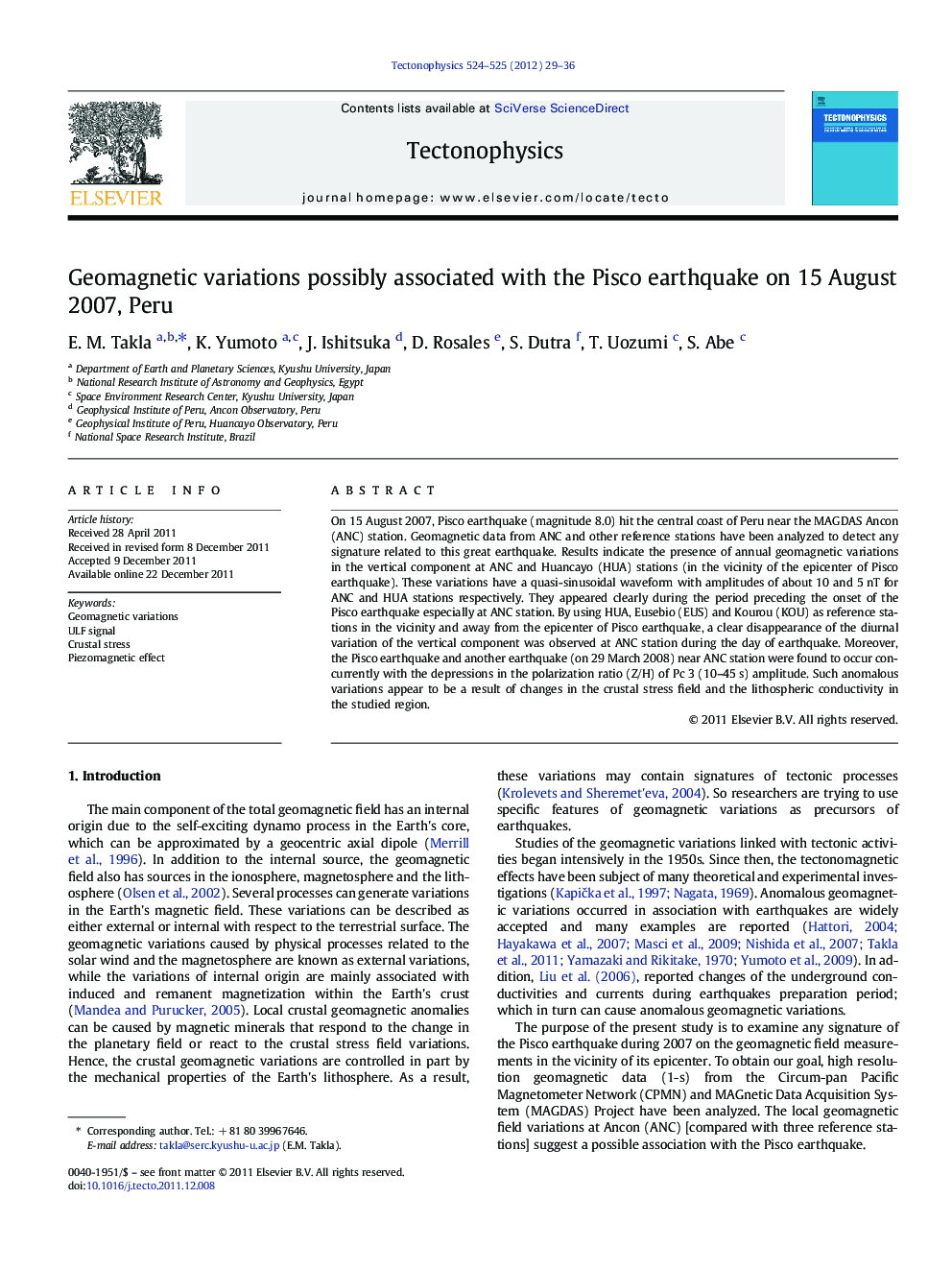| Article ID | Journal | Published Year | Pages | File Type |
|---|---|---|---|---|
| 4692937 | Tectonophysics | 2012 | 8 Pages |
On 15 August 2007, Pisco earthquake (magnitude 8.0) hit the central coast of Peru near the MAGDAS Ancon (ANC) station. Geomagnetic data from ANC and other reference stations have been analyzed to detect any signature related to this great earthquake. Results indicate the presence of annual geomagnetic variations in the vertical component at ANC and Huancayo (HUA) stations (in the vicinity of the epicenter of Pisco earthquake). These variations have a quasi-sinusoidal waveform with amplitudes of about 10 and 5 nT for ANC and HUA stations respectively. They appeared clearly during the period preceding the onset of the Pisco earthquake especially at ANC station. By using HUA, Eusebio (EUS) and Kourou (KOU) as reference stations in the vicinity and away from the epicenter of Pisco earthquake, a clear disappearance of the diurnal variation of the vertical component was observed at ANC station during the day of earthquake. Moreover, the Pisco earthquake and another earthquake (on 29 March 2008) near ANC station were found to occur concurrently with the depressions in the polarization ratio (Z/H) of Pc 3 (10–45 s) amplitude. Such anomalous variations appear to be a result of changes in the crustal stress field and the lithospheric conductivity in the studied region.
► Anomalous geomagnetic variations may occur in association with great earthquakes. ► The disappearance of the daily variation in the Z component considers a new finding. ► The depression of the polarization ratio of the Pc3 amplitude may be useful in the future as a tool for monitoring the seismic activities.
